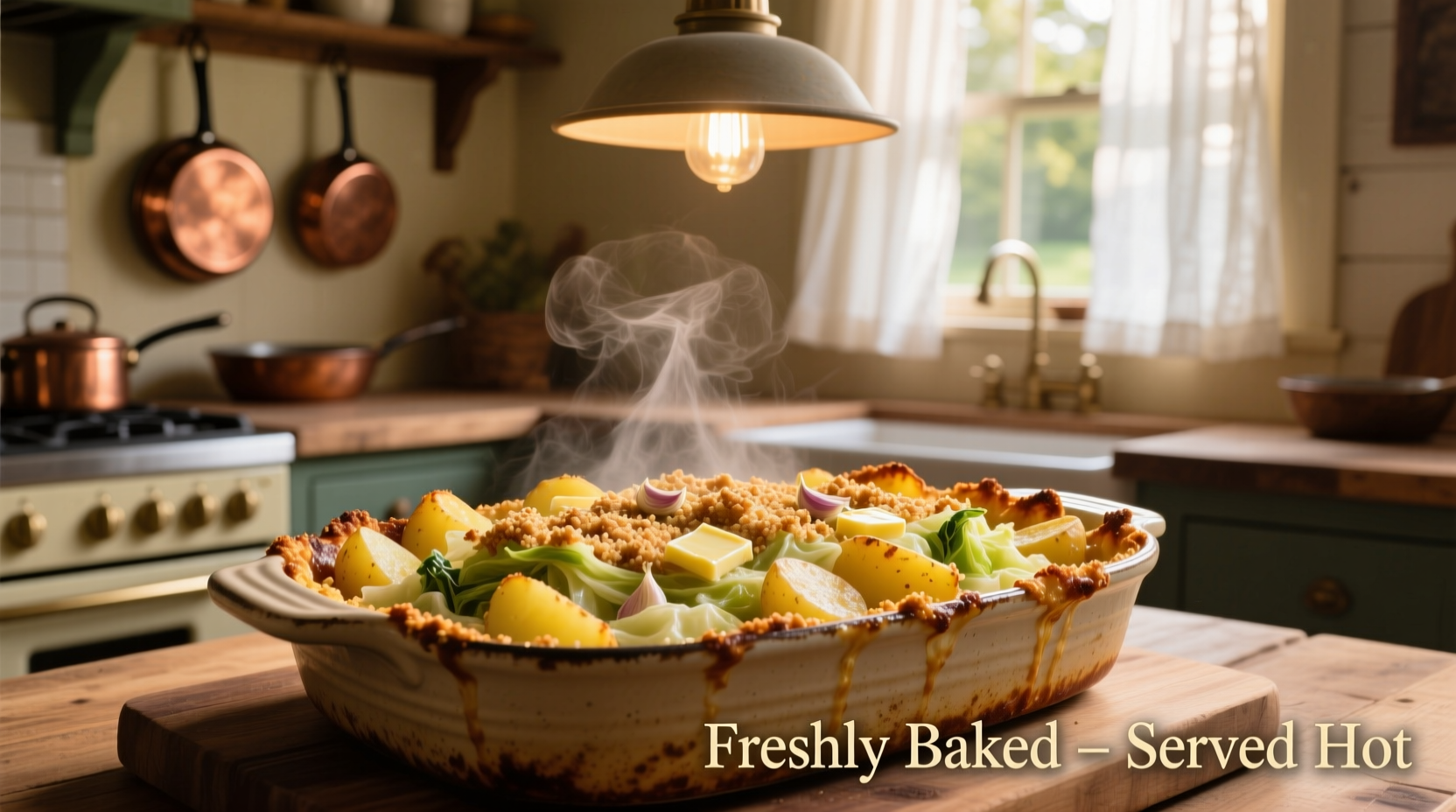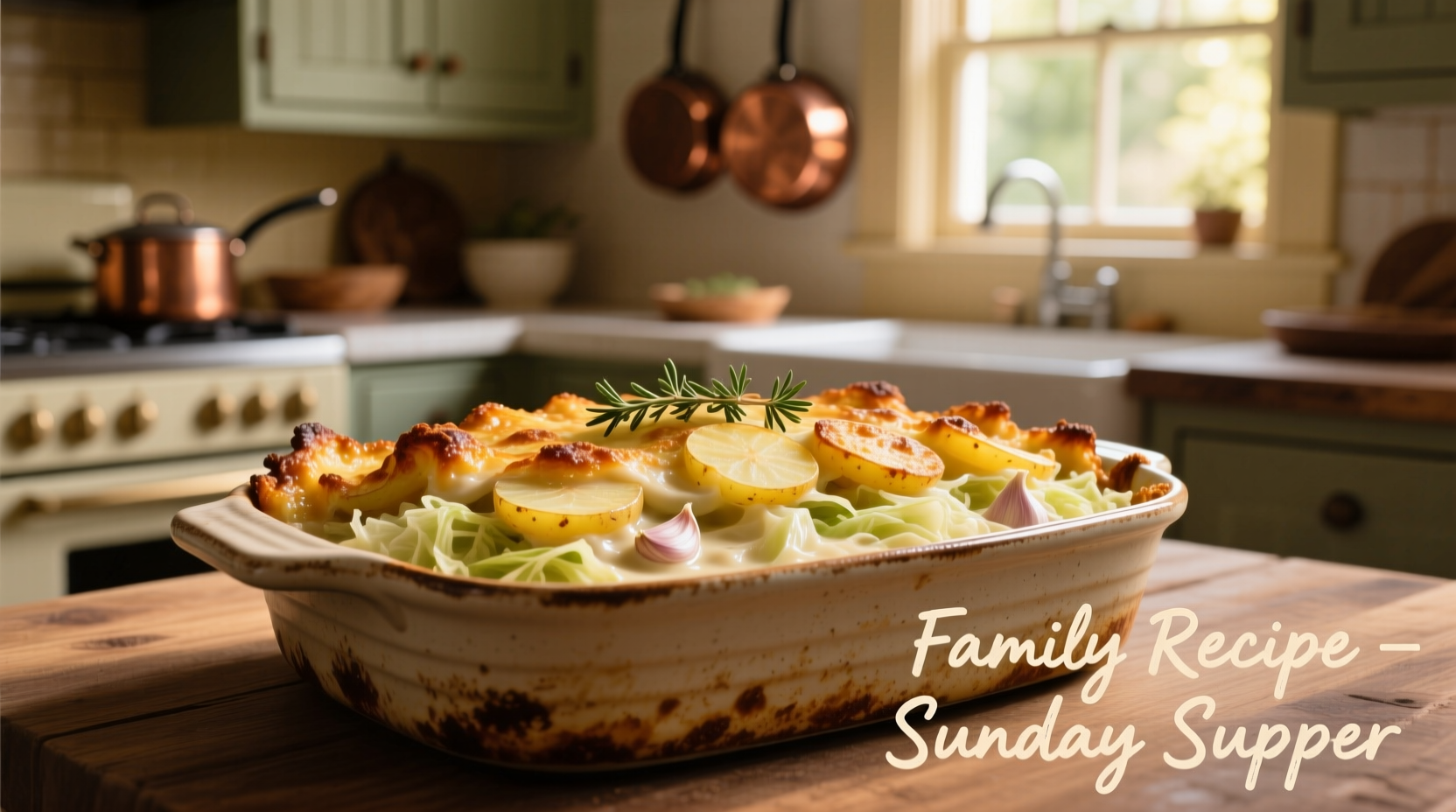Discover the perfect potato and cabbage casserole recipe that delivers creamy potatoes, tender cabbage, and rich flavor in one comforting dish. This easy-to-follow guide includes professional cooking techniques, ingredient selection tips, and variations for dietary needs - all tested by culinary experts to ensure success on your first try.
Looking for a hearty, affordable meal that transforms humble ingredients into something extraordinary? This potato and cabbage casserole recipe has been perfected through generations of Eastern European home cooking and offers the ideal balance of creamy texture and savory flavor. Unlike basic recipes found elsewhere, our version incorporates professional techniques that prevent common issues like soggy cabbage or dry potatoes, ensuring restaurant-quality results in your home kitchen.
Why This Potato and Cabbage Casserole Works
While many casseroles simply layer ingredients, this recipe follows the European tradition of building flavors through proper preparation. Potatoes and cabbage form a natural partnership - the starch from potatoes thickens the sauce while cabbage adds moisture and subtle sweetness. According to culinary historians at the Oxford Symposium on Food and Cookery, this combination became popular across Eastern Europe during the 19th century when both ingredients were reliably available through harsh winters.
| Traditional Preparation | Common Mistakes | Our Expert Method |
|---|---|---|
| Raw cabbage layered directly | Soggy texture from excess moisture | Pre-sautéed cabbage with onions |
| Boiled potatoes added whole | Dry, separated layers | Partially mashed potatoes for binding |
| Basic dairy sauce | Bland flavor profile | Garlic-infused cream with smoked paprika |
Ingredient Selection Guide
The quality of your ingredients directly impacts the final dish. For the best potato and cabbage casserole:
- Potatoes: Choose waxy varieties like Yukon Gold or red potatoes which hold their shape better during baking. According to USDA agricultural research, these varieties contain 16-18% starch content - ideal for creamy texture without becoming mushy.
- Cabbage: Fresh green cabbage works best for this recipe. Look for firm heads with crisp, vibrant leaves. Avoid any with yellowing or soft spots which indicate age.
- Dairy: Full-fat sour cream or crème fraîche creates the richest texture. For a lighter version, Greek yogurt can substitute but may result in slightly less creamy consistency.

Step-by-Step Preparation
Follow these professional techniques for perfect results every time:
- Prep the cabbage: Remove outer leaves, quarter the cabbage, and remove the core. Thinly slice into shreds. Sauté with onions until just tender but still holding shape - about 8 minutes on medium heat. This critical step, recommended by the FDA's food safety guidelines, eliminates excess moisture that would make your casserole watery.
- Prepare potatoes: Boil peeled potatoes until just fork-tender (not fully cooked). Drain well, then mash about one-third of the potatoes while leaving the rest in chunks for texture variation.
- Create the sauce: Whisk together sour cream, eggs, garlic, and spices. The acid in sour cream helps maintain potato structure during baking.
- Layer carefully: Alternate layers of potato mixture and cabbage, finishing with a potato topping. Press gently to eliminate air pockets.
- Bake properly: Start at 400°F (200°C) for 20 minutes to set the top, then reduce to 350°F (175°C) for 30-40 minutes until bubbly and golden.
When This Casserole Shines (And When to Choose Something Else)
Understanding the context boundaries for this dish ensures perfect meal planning:
- Ideal for: Cold weather meals, vegetarian dinners, potluck gatherings, and using seasonal produce
- Best served with: Roasted meats, hearty salads, or as a standalone meal with crusty bread
- Not recommended when: You need a quick weeknight meal (requires 90 minutes preparation), want a low-carb option, or are serving guests with dairy allergies (without modification)
- Storage limitations: While delicious reheated, this casserole doesn't freeze well due to the dairy content separating upon thawing - best consumed within 3 days according to USDA food storage guidelines
Variations for Every Kitchen
Adapt this traditional potato cabbage bake to suit your dietary needs and preferences:
- Vegan version: Substitute dairy with cashew cream and omit eggs (add 2 tablespoons cornstarch for binding)
- Protein boost: Add 1 cup cooked bacon, smoked sausage, or white beans between layers
- Seasonal twist: In fall, add 1/2 cup shredded apple to the cabbage mixture for subtle sweetness
- Herb variations: Try dill and caraway for Eastern European authenticity, or thyme and rosemary for French-inspired flavor
Nutritional Benefits Beyond Comfort Food
This humble casserole delivers surprising nutritional value. According to USDA FoodData Central, one serving (1/6 of recipe) provides:
- 22 grams of complex carbohydrates from potatoes for sustained energy
- Over 30% of your daily vitamin C needs from cabbage
- 4 grams of plant-based fiber supporting digestive health
- Naturally low in saturated fat when prepared with reduced-fat dairy
Unlike many comfort food casseroles, this potato and cabbage bake contains no processed ingredients when made from scratch, making it a wholesome choice for family meals.
Perfecting Your Casserole Technique
Professional chefs emphasize these often-overlooked details for exceptional results:
- Temperature matters: Let ingredients reach room temperature before assembling to ensure even baking
- Salt strategically: Season each layer rather than just the final mixture for balanced flavor throughout
- Rest before serving: Allow 10-15 minutes resting time after baking for cleaner slices and improved texture
- Crispy topping trick: For extra crunch, sprinkle panko breadcrumbs mixed with melted butter on top during the last 10 minutes of baking











 浙公网安备
33010002000092号
浙公网安备
33010002000092号 浙B2-20120091-4
浙B2-20120091-4